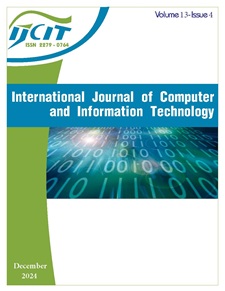Multi Moving Objects Detection in Video Using Pre-trained Deep Convolutional Neural Networks
DOI:
https://doi.org/10.24203/c7jv8b12Keywords:
Object Tracking; Video processing; Deep neural network; K-mean clustering.Abstract
Abstract- Nowadays object tracking is a critical concern in the field of machine vision. With the advent of powerful computers, affordable cameras, and growing demand for automatic video analysis, researchers have shown significant interest in object tracking. Various methods have been proposed for tracking objects in machine vision, but a key challenge remains: ensuring the robustness of tracking algorithms across consecutive video frames. In recent years, deep neural networks have emerged as a promising approach for accurate position estimation. In this study, we propose an enhanced method that combines deep convolutional neural networks with established techniques like K-means clustering. Our approach addresses challenges such as object disappearances and severe displacements. The selection of deep neural networks is motivated by their compatibility with target identification in video sequences, and achieving a remarkably low error rate in tracking validates our claim.
References
Shawky NE. Accuracy Enhancement of GPS for Tracking Multiple Drones Based on MCMC Particle Filter. International Journal of Security and Privacy in Pervasive Computing (IJSPPC). 2020 Jan 1;12(1):1-6.
A. Hechri, A. Mtibaa, Lane and Road Signs Recognition for Driver Assistance System, International Journal of Computer Science Issues, 8(6)1 (2016) 402-408.
P. Harrington, Machine Learning in Action, Manning Publications Co, ISBN 9781617290183, 2017.
J.G. Park, K.J. Kim, Design of a Visual Perception model with Edge-Adaptive Gabor Filter and Support Vector Machine for Traffic Sign Detection, Expert Systems with Applications, Elsevier Ltd, 40 (2013) 3679-3687.
T. Bui-minh, O. Ghita, P.F. Whelan, T. Hoang, A Robust Algorithm for Detection and Classification of Traffic Signs in Video Data, International Conference on Control, Automation and Information Sciences (ICCAIS), IEEE, (2017) 108-113.
R. Azad, B. Azad, I.T. Kazerooni, Optimized Method for Iranian Road Signs Detection and Recognition System, International Journal of Research in Computer Science, 4(1) (2014) 19-26.
C. Zi-xing, G. Ming-qin, Traffic Sign Recognition Algorithm Based on Shape Signature and Dual-Tree Complex Wavelet Transform, Journal of Central South University Press, Springer-Verlag, Berlin, Heidelberg, 20 (2013) 433-439.
F. Zaklouta, B. Stanciulescu, Real-Time Traffic Sign Recognition in Three Stage, Robotics and Autonomous Systems, Elsevier B.V., 62 (2014) 16-24.
S. Wang, P. Zhang, Z. Dai, Y. Wang, R. Tao, S. Sun, Research and Practice of Traffic Lights and Traffic Signs Recognition System Based on Multicore of FPGA, Communications and Networks, SciRes, 5 (2018) 61-64.
Z.L. Sun, H. Wang, W.S. Lau, G. Seet, D. Wang, Application of BW-ELM Model on Traffic Sign Recognition, Neurocomputing, Elsevier B.V., 128 (2018) 153-159.
E. Oruklu, D. Pesty, J. Neveux, J.E. Guebey, Real-Time Traffic Sign Detection and Recognition for In-Car Driver Assistance Systems, IEEE 55th International Midwest Symposium on Circuits and Systems (MWSCAS), (2017) 976-979.
Anurag Ranjan, Javier Romero, Michael J. Black, “Learning Human Optical Flow”, Computer Vision and Pattern Recognition, (2018).
Downloads
Published
Issue
Section
License
Copyright (c) 2025 Abolfazl Ansaripour, Hosein Mahvash Mohamadi

This work is licensed under a Creative Commons Attribution-NonCommercial 4.0 International License.
The articles published in International Journal of Computer and Information Technology (IJCIT) is licensed under a Creative Commons Attribution-NonCommercial 4.0 International License.


